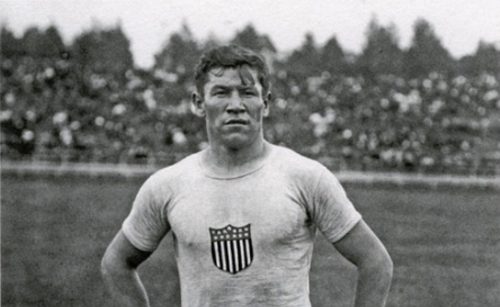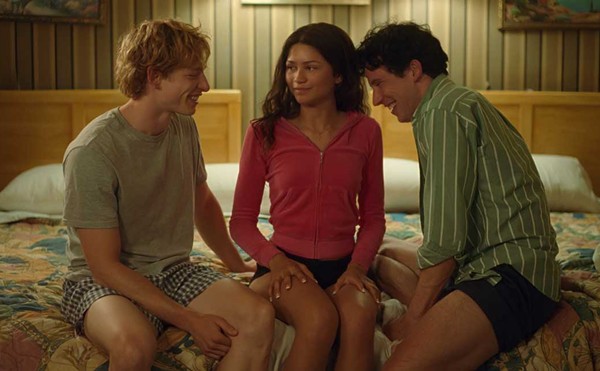
From Kate Buford's book "Native American Son: The Life and Sporting Legend of Jim Thorpe"
Jim Thorpe in the field uniform of the 1912 U.S. Olympic team.
All this talk of pro-sports athletes engaged in silent, nonviolent protest got a few still-surviving brain cells trying to reach us this morning. They clamored about a book review we ran six years ago, which brought up some of the white chauvinism associated with the rise of pro sports more than 100 years ago.
That review was of Kate Buford's book Native American Son, a biography of Jim Thorpe, the great Native American athlete and Olympic champion. Buford charts the growth sporting-industrial complex in the United States in the pre-Thorpe era, and comes to an intriguing conclusion: The U.S. sports craze dovetailed neatly with the disappearance of the frontier and the fulfillment of "Manifest Destiny."
Buford argues that sporting life represented an effort to re-create through competition the energy of the pioneer in the age of Teddy Roosevelt's "strenuous life." War metaphors abounded. Baseball was the "bloodless battle." Football was a ritualized conflict. You don't need to be George Carlin to figure out the connection between warfare and tossing a pigskin.
And it was all tinged with an Anglo-Saxon chauvinism that would be widely condemned today: In 1896, Henry Cabot Lodge declared the "injuries incurred on the [football] playing field" to be "the price which the English-speaking race has paid for being world-conquerors."
Of course, the point of Buford's book is that the alleged "white supremacy" on display on the gridiron was challenged and overthrown early on by Jim Thorpe and his Native American teammates from Carlisle University. That's where Buford's narrative really takes off, and provides some incredible scenes, such as a 1912 match in which Carlisle beat a West Point Army team 27-6, whipping a lineup that included four future World War II generals.
See the full review here.





